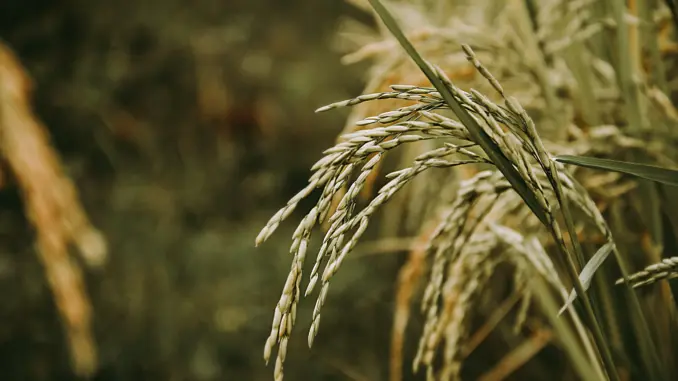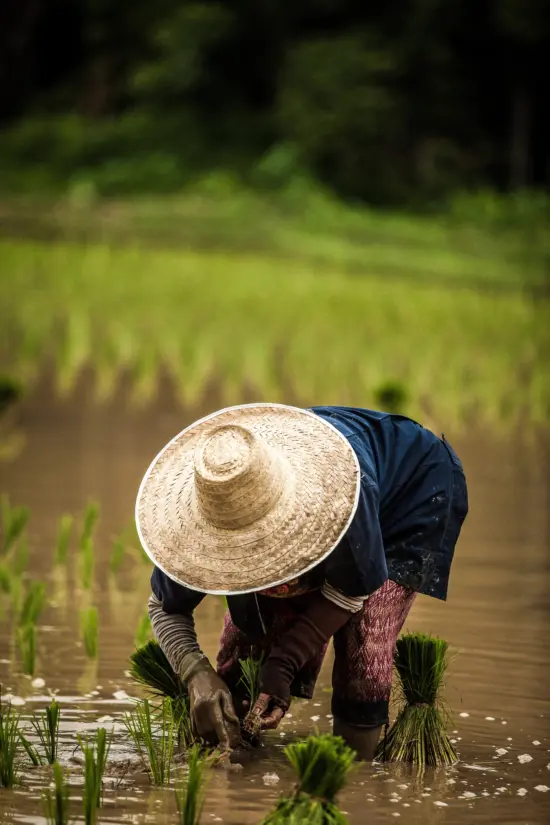
Rice serves as a staple food in many cultures and provides sustenance to billions of people around the world. Today, we explore its history and how it plays a role in the coffee world today.
BY EMILY JOY MENESES
BARISTA MAGAZINE ONLINE
Featured photo by Sandy Ravaloniaina via Unsplash
Where would we be if it weren’t for rice? Rice is one of the most important crops in the world, providing sustenance to billions of people and serving as a staple food in countries around the globe. It also plays a crucial role in global food security. Rice acts as a key tool in the fight against hunger and malnutrition around the world. In the coffee world, the crop also plays a significant part. It serves as a dairy alternative and is making its way into unique drinks inspired by a variety of cultures.
In this installment of ”Know Your Ingredients,” we’re exploring everything about rice: its journey around the globe, how it’s cultivated and turned into milk, and how specialty-coffee shops are incorporating it into their menus.

Rice: A Brief History
Since seemingly the beginning of time, rice has been a foundational part of diets around the world. Exact estimates of when rice cultivation first started are still shrouded in mystery. Evidence from archaeological sites suggests that rice farming began as far back as 8000 B.C. Most historians agree that the crop was first cultivated in China near the Yangtze River. From there, it spread throughout Asia and the Mediterranean, then to parts of Africa and Europe, until eventually making its way to the Americas. The versatility of the rice plant is what allows it to thrive in so many environments around the world—from dry desert landscapes to moist wetlands.
Cultivation
Rice cultivation typically begins with preparing the fields by plowing, leveling, and adding fertilizer. The seeds are then sowed in prepared beds. Once the seedlings have grown, they’re transplanted by hand to flooded fields, where they continue to grow submerged in water. Throughout the growing process, farmers manage the water levels carefully, adjusting them as necessary—typically, about two to four inches of water is needed throughout the growing season. When the rice grains mature, they are harvested and dried before being processed for consumption.

Spiritual Significance
Around the world, rice holds deep spiritual significance—and in many places, the cultivation of it is seen as sacred. Throughout Asia, the crop is known to symbolize abundance, fertility, and prosperity. It’s often incorporated into religious ceremonies and offerings. Throughout Latin America, rice is seen as a symbol of unity and community. In ceremonies and offerings for Afro-Caribbean religions like Santeria and Vodou, rice is often used to represent the earth, and is believed to hold the power to absorb negative energy and to bring peace and harmony. Overall, rice serves as a powerful symbol of both physical and spiritual nourishment in many parts of the world.
Rice Milk: A Formidable Dairy Alternative?
The process of making rice milk is similar to making oat milk or almond milk: Cooked rice is blended with water, and the mixture is then strained through a cheesecloth or fine sieve. Rice milk can be left plain or flavored with sweeteners or spices like vanilla, cinnamon, or cocoa powder.

When compared to other dairy alternatives like almond and soy milk, rice milk requires less water and energy. It’s also nutritious! Rice milk is lower in protein than soy milk but is a good source of B vitamins, which help support energy production and brain function. Overall, rice milk is a formidable option for people looking for a dairy alternative that’s both healthy and sustainable.
Rice in the Coffee World
When it comes to rice in the specialty-coffee world, we’re particularly inspired by Mañana Coffee’s horchata latte, made with organic brown rice, cinnamon, vanilla bean, piloncillo (raw cane sugar), and morro seeds. Another noteworthy use of rice: Cafe de Mama in Los Angeles’ Koreatown offers an injeolmi latte, topped with sweet Korean rice cake and infused with other flavors like black sesame and mugwort.
There are so many ways to incorporate rice into both café drinks and at-home coffee endeavors. Though rice is an integral part of daily life for many people around the world, it doesn’t need to be seen as boring or mundane—but rather, full of life and possibility.
ABOUT THE AUTHOR
Emily Joy Meneses (she/they) is a writer and musician based in Los Angeles. Her hobbies include foraging, cortados, vintage synths, and connecting with her Filipino roots through music, art, food, and beverage.

